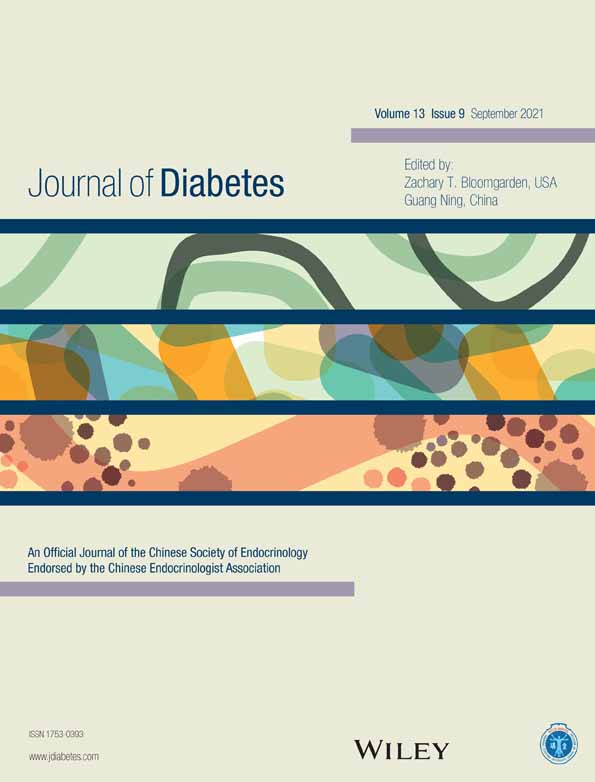The silent occurrence of cerebral small vessel disease in nonelderly patients with type 2 diabetes mellitus
2型糖尿病非老年患者中隐匿性发展的脑小血管疾病
Fang Fang and Rong Cao contributed equally.
Funding information: Clinical Research Plan of SHDC, Grant/Award Number: 2020CR4013; Interdisciplinary Program of Shanghai Jiao Tong University, Grant/Award Number: ZH2018QNB10; National Natural Science Foundation of China, Grant/Award Numbers: 81870610, 81900813; Shanghai Medical Guidance Project, Grant/Award Number: 19411964500
Abstract
enBackground
The prevalence of cerebral small vessel disease (SVD) increases in elderly patients with type 2 diabetes (T2DM), exacerbating cognitive decline. However, the prevalence and the severity of SVD in dementia-free nonelderly T2DM patients were largely unknown. Our primary aim is to investigate SVD in such patients, with a specific focus on the correlation between SVD and diabetic peripheral sensorimotor polyneuropathy (DSP).
Methods
We recruited 180 young and middle-aged subjects without cognitive impairment (106 with T2DM, 74 controls). Signs of cerebral SVD on magnetic resonance image were investigated, and the overall SVD burden was evaluated by a combined score. Patients with T2DM underwent further detailed DSP assessment. Regression models were used to investigate the association of SVD with the presence of T2DM, and the associations of the prevalence and severity of SVD and DSP were also explored in patients with T2DM.
Results
The prevalence of microbleeds and overall burden of SVD were significantly higher in T2DM patients than in the controls. Further, the presence of DSP related to an increased risk of SVD after adjustment in diabetic group. Moreover, Toronto Clinical Scoring System values were positively associated with the increased SVD scores, and bilateral sural sensory nerve conduction velocities were negatively associated with increasingly severity of SVD scores.
Conclusion
The current findings extended the increasing prevalence of SVD to dementia-free nonelderly patients with T2DM, suggesting that the time for cognitive screening and prevention might be moved forward in T2DM patients, especially for those with DSP.
摘要
zh目的
脑小血管疾病(Small Vessel Disease, SVD)在老年糖尿病患者中显著增加, 并导致认知功能障碍。然而脑SVD在非老年2型糖尿病中的现状知之甚少。本研究旨在此类患者中探索脑SVD的发生率和严重程度, 并探索其与糖尿病周围神经病变的相关性(脑SVD与糖尿病周围神经病变均属于高血糖在神经系统中造成的微血管损伤)。
方法
本研究纳入180名临床上无认知障碍的中青年受试者, 其中2型糖尿病106位, 非糖尿病对照74位。评估磁共振图像上脑SVD的征象, 包括腔梗、脑白质高信号、血管周围间隙扩大、微出血, 计算各征象的综合评分。对糖尿病患者进行详细的周围神经病变评估。采用回归模型探索脑SVD和糖尿病周围神经病变之间的相关性。
结果
和对照组相比, 2型糖尿病在多项脑SVD征象(包括腔梗、血管周围间隙和微出血)的发生率和综合评分均显著升高。调整多个混杂因素后, 合并糖尿病周围神经病变的患者脑SVD的发生风险显著增加。糖尿病患者中, 外周神经多伦多临床评分与脑SVD的严重程度呈正相关, 双侧腓肠神经传导速度与脑SVD严重程度呈显著负相关。
结论
在无临床认知功能障碍的非老年2型糖尿病患者中已经存在脑SVD发生率增加, 提示针对认知的筛查和预防策略在2型糖尿病中需适当提前, 特别是合并周围神经病变的糖尿病患者更需警惕。




